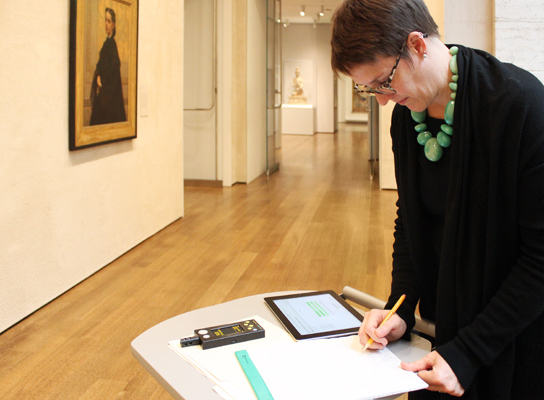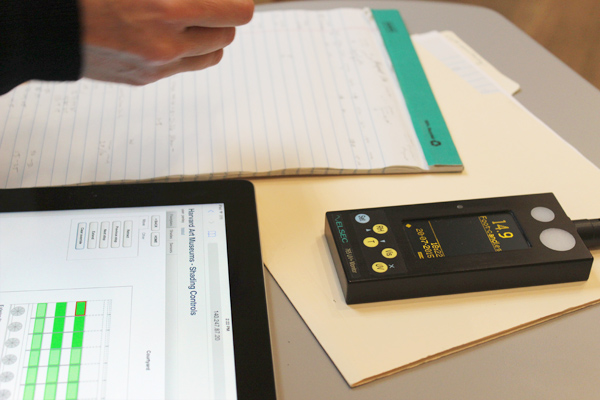One of the most striking features of the new Harvard Art Museums is Renzo Piano’s glass roof—the dazzling “light machine” that gently disperses sunlight throughout the arcades, galleries, and courtyard below. The museums’ many windows and glass doors also invite ambient light into the building, making the experience of wandering through our indoor spaces delightfully airy and bright, even on the gloomiest of days.
Before the museums reopened, we took great precautions to ensure that works were protected from excessive, potentially damaging light. Works on paper, for instance, are always displayed in galleries with no windows, and more than 500 shades were installed to ensure that the light can always be closely controlled. In the year since, conservators have had to figure out the optimal times to close or open those shades by studying how light flows into and around the building, and by tracking the light levels at various locations within the museums, during different times of the day and year.
Penley Knipe and Kate Smith, conservators in the Straus Center for Conservation and Technical Studies, coordinate this dynamic task. “The sun’s position can change within the course of a season, and even within the course of a day,” Smith said. Ambient and reflected light that bounces off multiple surfaces also raises exposure in unexpected places, so the conservators have had their hands full. “It’s all about learning the light,” Knipe said.
At least once a month, Knipe and Smith use a handheld digital light reader to record the “lux,” or light levels, near individual works of art. Works on paper shouldn’t be exposed to over 50 lux, and paintings are not to be exposed to more than 200 lux. Knipe and Smith test the light levels with shades both up and down (a tablet computer lets them control shades remotely) and then determine the best shade positions for each space, time of year, and time of day. The overall aim has been to establish effective “patterns of closure” for groups of shades. These patterns can then be programmed so that shades are opened and closed automatically.
There have been some surprises. In the Buddhist art gallery, conservators needed to keep shades down to protect pigments on the Kneeling Attendant Bodhisattva sculpture. An unexpected benefit was that this allowed a better view of the nearby limestone sculpture Standing Buddha. With the shades up, sunlight had overwhelmed it, making details harder to discern. “It’s funny; sometimes the shade being up seems like a great idea but having it down will help you see certain objects a little better,” Knipe said.
In the coming year, Knipe and Smith will continue to monitor the light in the museums and refine the schedule for using shades. They have yet to closely examine the impact of snow on light levels, for example.
Meanwhile, the conservators have relished the work as an opportunity to interact with the public. “I’ve had a lot of really good conversations with visitors because they want to know what’s going on,” Smith said. “Some people are relieved to know that we’re thinking about this, and others don’t even realize that we are.”




